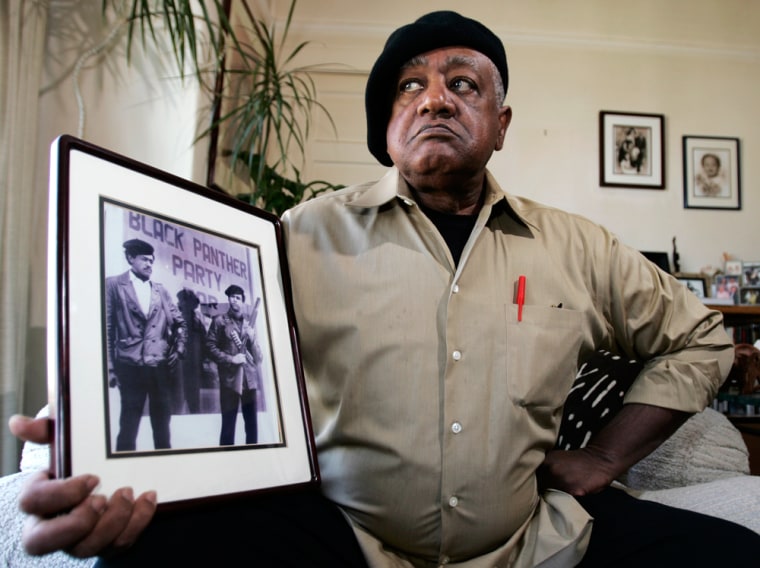The black berets and leather jackets that made them 1960s icons are gone, along with the shotguns and bandoliers that led the world to sit up and take notice of their uncompromising protests.
Aging members of the Black Panthers gathered for an unprecedented reunion this weekend in Oakland, California, the city that marked its painful birth as an urban radical movement exactly 40 years ago. Their soulful handshakes and world-weary hugs gave little hint of the angry battles many fought with police in their teens and twenties.
“All Power to the People,” some 200 participants chanted in unison, arms raised in clenched fist salutes, taking comfort in an old slogan despite the fact that history has been unkind to the political agenda behind this demand.
Founded in 1966 by local activists Huey Newton and Bobby Seale, the Black Panther Party for Self-Defense struck a confrontational tone with authorities by openly displaying weapons at protests, grabbing them international headlines.
Their willingness to meet racist violence with violence proved popular with a generation of black Americans frustrated with the slow progress of the non-violent politics of the civil rights movement under Rev. Dr. Martin Luther King, Jr.
‘Same issues’ persist
The Ten Point Program that inspired the Panthers is both dated and unfulfilled: an end to police brutality, jobs, restitution for slavery, housing, education, exemption of blacks from military service and imprisonment, trials by all-black juries, national self-determination, and so on.
“Any (government) program having to do with poor people is being cut,” said Kent Ford, a leader of the former Black Panthers Portland chapter. “So we still have the same issues.”
“As opposed to picking up a gun, a computer may be more effective today,” said Larry Little, a former leader from Winston-Salem, North Carolina who spoke to the group.
An honor guard of 15 young people wearing black and gray camouflage fatigues stood at attention outside the reunion, then marched in military formation, fists punching the air. They are members of the Black Riders Liberation Front, made up of former Bloods and Crips gang members from Los Angeles.
Social gains overshadowed
Despite their standing as urban revolutionaries, political abstractions were never the Black Panthers’ strong point, no matter how frequently members borrowed quotations from “The Little Red Book” of China’s communist leader Mao Tse-tung.
Instead, members busied themselves with practical concerns: organizing lunch programs for ghetto school kids and initiating door-to-door tests for sickle-cell anemia, a then little-known disease that afflicts mostly people of African descent. Free ambulance services and medical and dental health clinics were launched, nudging embarrassed officials into taking action.
From its heyday in 1968 as the original “radical chic” cause among international leftists and Hollywood movie stars, the group staggered into the 1970s faced with a massive U.S. government campaign to disrupt local Black Panther groups and imprison or kill its leaders that only came to light later.
Scores died in countless gun battles with the police or other party members, including Fred Hampton and Lil’ Bobby Hutton. Subsequent years were not kind to its leaders: Huey Newton was murdered by a 25-year-old crack dealer in 1989 when a drug deal on the streets of West Oakland went bad.
‘People got away from principles’
Little says he left the Panthers in frustration but that its self-help spirit remained with him and fellow activists.
“At some point it was clear people got away from principles,” said Little, now a political science professor at Winston-Salem State University. “It’s not that we ignore it. But all the other programs get swept away. All the other good is forgotten,” he said.
Away from the event, Oakland Mayor Jerry Brown said the Panthers had both a negative and positive impact on his city.
“A lot of things came out later. There have certainly been allegations of murders which have been attributed to them,” he told Reuters of internal battles that tore the group apart.
But former San Francisco Mayor Willie Brown, perhaps California’s most prominent elected black leader in recent decades, was more upbeat in his assessment.
“They were a good thing in historical perspective,” he said in an interview. “They stirred the hearts and minds of African Americans to participate on their own behalf.”
